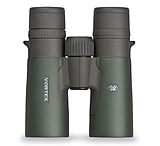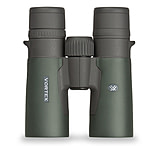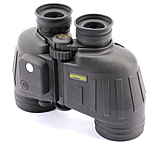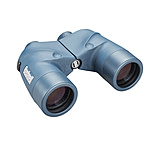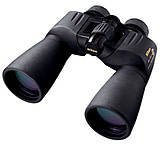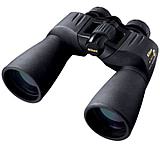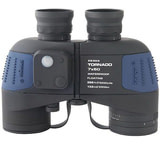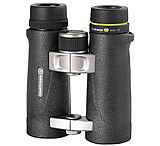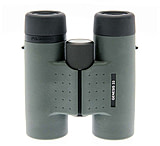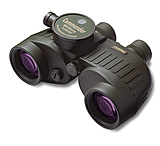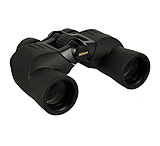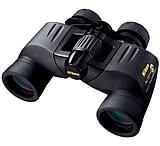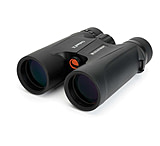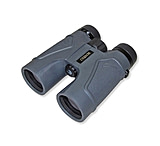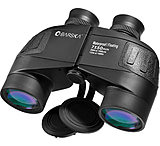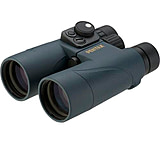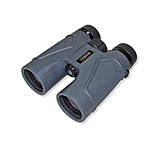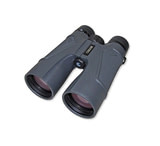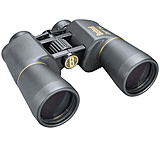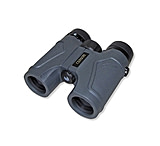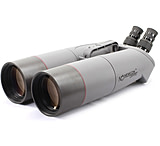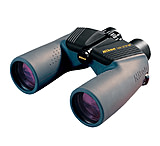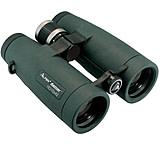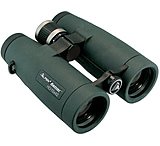Hunting Binoculars - Big Game Hunting Binos, Long Range Binoculars for Extreme Weather — 26 products / 27 models — Page 1
We love hunting, and we know you do too, so we wanted to put together a list of our best hunting binoculars. We have great birding binoculars and astronomy binoculars as well, this page is all about finding those binos that will make your next hunting expedition the most successful. There are a lot of great brands that manufacture quality hunting binoculars, from Bushnell and Leupold to our own exclusive line of OPMOD products. You'll want to be sure your binoculars for hunting are rugged and reliable, with coated optics and a tough body. There's a ton of great information below on what exactly to look for, and the binoculars we list on this page are perfect for any hunting expedition. If you have any questions that aren't answered on this page or our How to Select Binoculars Guide, feel free to contact us so one of our product specialists can help you find the hunting binocular that's perfect for you.![]()
GENERAL COMMENTS:
Because hunting is such a varied activity, all sizes and types of binoculars have their place. Still, there are some guidelines you can use for selecting any hunting binocular.
MAGNIFICATION - (the first number in a binocular, the 8 in an 8x40)
7x to 10x is enough magnification in a binocular for any type of hunting. Hunters as a group tend to fall into the bigger is better category and are often tempted to overdo on magnification. Keep in mind, that as magnification goes up, image steadiness goes down. Steadying a 10x binocular from the comfort of a tree stand is one thing, but steadying a 10x binocular after a long hike up a mountainside is another thing entirely. Large observation binoculars of 15x70 or 20x80 are sometimes used for hunting, but because these require a tripod, they are more like spotting scopes than binoculars in the way that they are used. - Many hunters mistakenly believe that stepping up to a 10x binocular from a 7x binoculars or 8x binoculars will solve a problem when more magnification is needed. Rarely so. If you need more magnification than 7x or 8x, you should be thinking spotting scope. This is especially true if you are trying to score a rack and count points at distances beyond 100 yd. That is a job for a spotting scope, not your binocular. - Zoom binoculars might seem to be the answer to the magnification question, but for hunting they have some serious drawbacks. First, no one makes a waterproof zoom binocular. This is a serious shortcoming for hunting. Second, zoom binoculars are always inferior optically (field of view and image quality) to a fixed power binocular at any magnification. Third, zoom binoculars just don't stand up to hard use - the return rate and repair rate on zoom binoculars is ten times higher than a fixed bino of the same model. Fourth, beyond 10 or 12x, you will still need to use a tripod to support a zoom, anyway. Might as well put a good, waterproof spotting scope on the tripod instead.
OBJECTIVE SIZE - (the second number in a binocular, the 40 in 8x40)
A good binocular with an objective of 40 or 42mm will handle any hunting situation during legal shooting hours. A larger 50mm lens or 56mm lens will allow you to see more detail if you are hunting or scouting at night, but they will also be larger, heavier and more expensive than the same model in a 40mm lens or 42mm lens. - If you need to travel light, a 30 or 32mm objective is a great compromise between performance and portability. If you must go with a 20mm or 25mm model to save weight and size, don't expect great performance in low light situations or viewing comfort over long observing sessions. If you must go small, don't handicap yourself more by going cheap, either.
PRISM TYPE
Porro prisms are the older, traditional hump shaped body design, whereas roof prisms are the straight, sleek barrel body design. - Porro prisms are less expensive to produce optically and if price is a concern, you are more likely to get a good optics with an inexpensive porro prism than an inexpensive roof prism. If you are looking at a porro prism, get the type made with Bak4 glass for the best in image brightness and image quality. - On the other hand, most people prefer the handling qualities of the sleeker roof prism design. In addition, the roof prism is the easiest design to waterproof and seal. If durability and longevity are a concern, you are less likely to have problems down the road with a good roof prism. If you are looking for a roof prism, a PC (phase-corrected) roof prism will deliver sharper images than a non PC roof prism.
FOCUS TYPE
For hunting, there is a place for IF (individual eyepiece focus) and center focus binoculars. - IF binoculars don't require any focusing when you are observing beyond thirty or forty yards. This makes an IF binocular a great choice for medium and long distance work. IF binoculars are also popular with the military because they are easier to waterproof than center focus models and have fewer external parts. However, an IF binocular is too slow to focus at distances of less than 30yds or so. For close in work, go with a center focus. - Center focus is the most common type of focusing system on a binocular. This system will handle any distance from up close to infinity.
SPEED OF FOCUS
This is generally not a feature of concern unless you will need to get into action fast or will be working at shorter distances where you need to refocus a lot.
EYE RELIEF
If you wear eyeglasses in the field, you should ALWAYS wear them when looking through a binocular. In the excitement of the moment, the last thing you want to do is fumble with your glasses so you can use your binoculars. With all the excellent long eye-relief binoculars available today, this is totally unnecessary anyway. Look for a model that has at least 14-15mm if you wear glasses. Don't settle for a reduced field of view because you don't have enough eye relief.
WATERPROOFING
Of all the applications where a binocular is used, hunting ranks near the top in wear and tear department. No other user group, except perhaps the military, is apt to use a binocular in all kinds of weather and expose a binocular to more dust, dirt and grime. Hunting calls for a binocular that is waterproof - not weatherproof, rainproof, or climate proof or water-resistant - but waterproof. The only label that guarantees a binocular not to fog up internally or leak is waterproof. Even if you hunt in a dry climate, a waterproof binocular is the best way to seal a binocular against dirt, dust and sand. Lastly, when a binocular leaks, the only models a manufacturer will fix at no cost to you is one they advertised as waterproof.
LENS COATINGS
With multi-coating now available on binoculars under $100, there is no reason to settle for anything less in lens coatings. The best models will be fully multi-coated (FMC) with all lenses receiving several layers of image brightening coatings. In top-of-the-line models, multi-coating is assumed, but for any binocular under $300 you should check for this feature.
IMAGE QUALITY
This is one feature that you should carefully to match your type of hunting. You can get by with fair image quality if you will only be glassing now and then, for a few seconds at a time, to tell a deer from a tree or rock maybe a hundred yards away. On the other hand, if you are out west and glassing for hours at a time to locate game, you will need the best image quality your budget can afford. (There is a reason that hunting guides only carry the best.) - There are a couple of waterproof binocular models suitable for light duty hunting under $100, but for a model that is both waterproof and optically adequate, prices begin at $150. Binoculars in this price range are best suited for point and look glassing, but not for long hours of scanning. If a binocular is the your primary tool for finding game, you need to spend more. - If you will be hunting on a regular basis and especially if you use a binocular to find game, you should be willing to spend at least $250-300. At this price, you get the most optics for your dollar - beyond this price you will spend hundreds of dollars more for relatively small increases in optical quality. A $300 binocular will not be as durable or as comfortable to use for long observing sessions, but it will provide many years of service with reasonable care. - When a binocular can make or break a hunt, it is time to look at a top-of-the-line model from Zeiss, Swarovski, Leica, Nikon and others. Although initially expensive, these binoculars are relatively cheap investment when weighed against the many years of great performance and service they provide. Models in this quality range allow you to view for long hours at a time without any hint of eye fatigue or strain and allow you to glimpse detail that will be missed by cheaper binoculars. Be warned, however, that once you have used one of these models, you never settle for anything less.
ARMORING
Armoring does not make a binocular waterproof, but it does protect a binocular against scratches and dings. More importantly for a hunter, armoring also silences a binocular when you bang a gun or bow against it. Camo armoring is a popular option, but be advised that many a binocular has been lost in the underbrush when a hunter sets a camo binocular down to make a trip to the bushes.
FIELD OF VIEW
If you are working in close with fast moving game (as you might to identify waterfowl) a wide-angle binocular can help. However, you should never sacrifice image quality to achieve a wider field of view. For the vast majority of hunting, a standard field of view is more than adequate. Differences of less than 30 ft at 1000 yd in field of view should be ignored when comparing two binoculars. You will not notice the difference.
WEIGHT
If you are going to be wearing a binocular around your neck all day, you need to give careful consideration to size and weight. A binocular of 35 oz is about as much as most people want to around their neck for more than a few hours at a time and you should go much lighter if you will also be carrying other equipment. The good news is that many full size binoculars now weigh around 25 oz. Another popular option is to go with a 30 or 32mm objective model. These mid-sized binoculars are a great compromise between performance and portability and are a favorite size for many backcountry hunters.


















